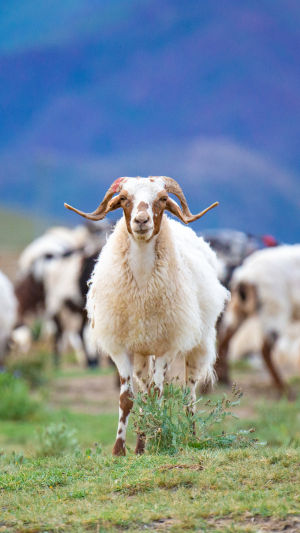When it comes to sheep, people typically think of two types: "sheep" and "goats." This is because their horns are easily distinguishable from each other.
However, there are actually more than one hundred breeds of sheep in the world. In this article, we will provide you with some fascinating information about some of the lesser-known sheep breeds.
Angora Goat
The Angora goat is an ancient wool breed that belongs to the group of wool goat breeds.
Native to the grasslands of Turkiye, these goats are mainly found in the Anatolian Plateau, where the climate is dry, the soil is barren, and the pasture is sparse. These goats are named after the Angola plateau, where they are bred extensively.
Angora goats can produce wool with good luster and high value, making them a valuable breed. Their wool was exported to various countries from the 16th to the 20th century.
Wild Sheep
The ram is the only wild sheep native to Africa. They live in arid regions, inhabiting inhospitable rocky and sandy terrain. Due to the very arid living environment, wild sheep are very thirst-resistant like camels.
The wool color of wild sheep is sandy yellow, which is a good protective color. They have developed a unique habit of remaining motionless when they find predators, as there is less vegetation in their habitat and a lack of hiding places.
Black Nose Sheep
Black-nose sheep originated in the Valais region of Switzerland and can be traced back to 1400 BC. The most striking features of black-nose sheep are their black face, ears, nose, and legs. The rest of their fur is white and fluffy. Local people bred black-nose sheep mainly for meat and wool.
Rock Sheep
Blue sheep, also known as cliff sheep, are adept at climbing rocky walls. As the name suggests, they can move freely and flexibly on cliffs. They can jump from a height of several meters without injury, as long as there is a place to stand.
From a behavioral standpoint, blue sheep and goats are similar. However, in terms of appearance, blue sheep are more sheep-like in shape, and there is no beard on their lower jaw. The shape of their horns is quite special.
Their horns are not curved like a sheep's spiral or like an ibex's scimitar, but instead are first parted on the sides and then slightly curved back. Their horns are like spreading wings, making them quite beautiful.
Himalayan Tahr Sheep
The Himalayan tahr sheep is a rare animal that is as famous as the long-tailed gray langur, bear monkey, and snow leopard. With only about 500 in total, they are very rare.
They mainly live on the southern slopes of the Himalayas at an altitude of 3,000 to 4,000 meters and are often active in rugged bare rock mountains and forest edges. The wool on the neck, shoulders, and buttocks of male Tahr sheep is longer, and can reach a length of 12 to 18 centimeters.
In conclusion,there are many fascinating breeds of sheep in the world, each with their unique characteristics and qualities. From the ancient wool-producing Angora goat to the rare Himalayan tahr sheep, there is a vast diversity of sheep breeds worth learning about.
Black-nose sheep, wild sheep, and rock sheep are also notable breeds with interesting features and behaviors. Whether you're interested in wool production, animal behavior, or just curious about the diversity of life on our planet, there's always something new to discover about sheep and their many breeds.





